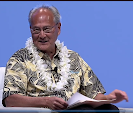Neville Ray, the Chief Technology Officer of T-Mobile USA, says the company is in "no rush" to activate a fourth-generation network right away.
Observers will point out that T-Mobile USA is making the best of a bad situation: it has no 4G spectrum, and continues to work on how to get it. So making a virtue out of necessity is not a bad way to go. Beyond the positioning, there are some practical issues.
T-Mobile USA points out that handset selection initially will be limited, and that it is possible battery life and other issues could complicate end user experience.
Also, to the extent that the immediate advantage for a user is "more speed," so long as T-Mobile USA can keep up in the bandwidth area--actual experience, not marketing headlines--the advantages of broader handset availability and possibly price should prove advantageous.
And, as a practical matter, T-Mobile USA's HSPA+ network should perform credibly compared to the WiMAX and Long Term Evolution networks operated by Sprint, Clearwire, Verizon and AT&T. That should immediately raise questions for mobile marketers. So far, 4G promises "faster speeds." Most would agree that is the case.
The broader issue is whether end users value the "faster access" offers a big enough marketing platform to drive use of devices and applications using the "4G" networks, or whether other factors, including handset desirability, pricing and packaging, unique applications or other elements of service are equally, or more, important.
So far, a reasonable observer might say that 4G, in a network sense, has not changed end user experience all that much. There has been more differentiation in service plans, terms and conditions. Of late, device differentiation has been a bigger factor. But all that is fairly subtle stuff.
Most people would find it hard to give a concise, compelling reason for why a 4G experience is better than a 3G experience, with the exception of "speed." If a 3G network can match 4G speed, lots of people might turn their attention to handsets and packaging as the key drivers of choice.


